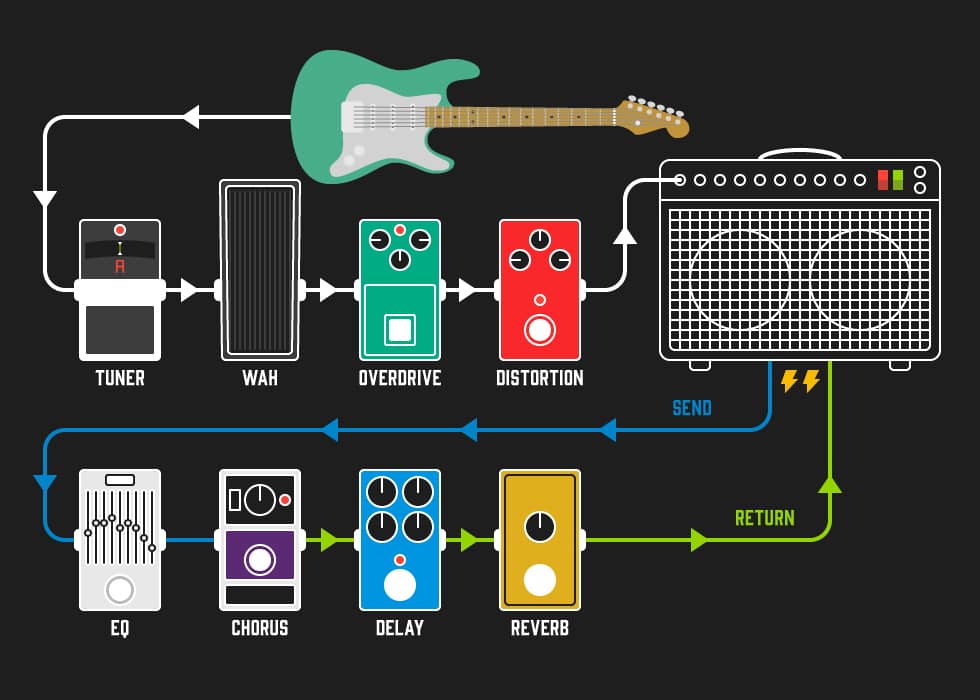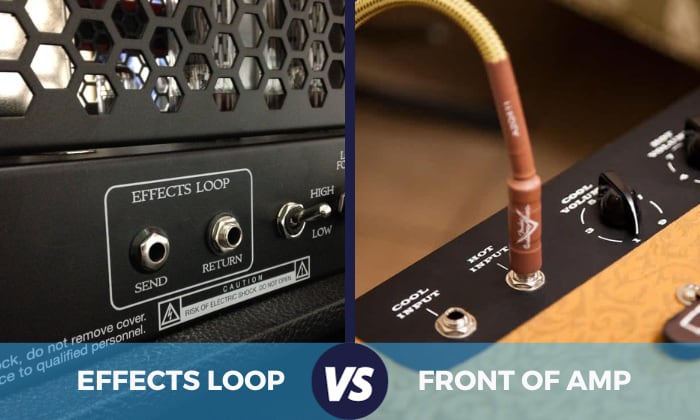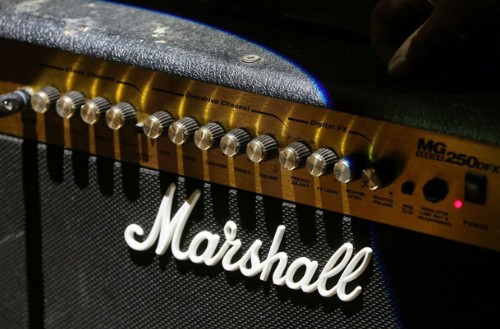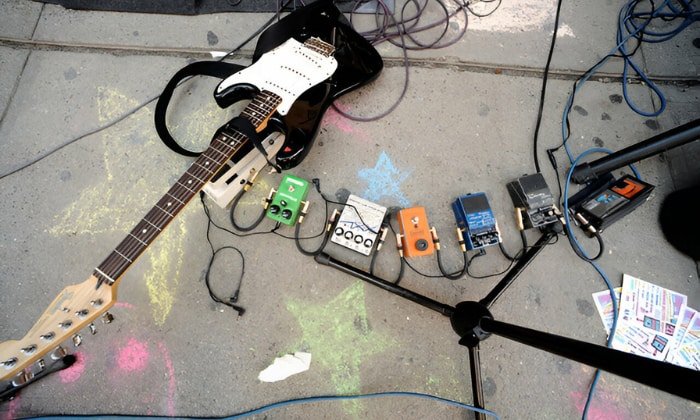If you’re just starting out on your guitar or bass journey, getting to know your amplifier is a big part of the deal. One thing that might have you scratching your head is whether you should use an effects loop or connect your pedals straight to the front of the amp.
It’s a decision that can seriously shape how your instrument sounds. This guide is here to help you figure out the differences between these two approaches so you can make the right call for your music.
Here’s a quick comparison table to give you an idea of the effects loop vs front of amp
| Effects Loop | Front of Amp | |
| Modulation | The sound comes through with exceptional clarity, and the effects are seamlessly applied across the entire tone. | The effects are noticeably amplified, creating a more pronounced impact on the overall sound. |
| Tone Impact | No impact on the tone | The tone undergoes alterations depending on the musician’s personal preferences. |
| Delay | The repeats resonate with heightened clarity and precision. | The repeats lose some of their pristine quality, taking on a more distorted character. |
| Reverb | It provides musicians with a clear, high-end sound. | The reverb effect tends to overpower the overall audio output. |
Table of Contents
Overview
It is sometimes troublesome to come across many music types of equipment and strategies, especially for beginners.
For guitar musicians or anyone who plays an instrument, it is a must to understand the implications of these choices on their sound. Without one of these, you’ll miss out, big time.
What is the Effects Loop?
For beginners and seasoned guitarists alike, understanding the implications of effects loops for amps is crucial in shaping their musical journey.
Typically located at the rear of the amplifier and featuring send (output) and return (input) jacks, an effects loop enables the integration of pedals after the pre-amp and before the power amp, offering a versatile method to fine-tune your sound.
To understand fully, take a look at this effect loops diagram.

Pros and Cons
- Handling delay effects flawlessly, making it an ideal choice for achieving pristine, high-quality delay sounds.
- Effects, especially time-based ones, are notably enhanced when incorporated through an effects loop.
However, one potential drawback is that it may not always operate seamlessly and might require additional adjustments for optimal performance.
What is the Front of Amp?
The front of a guitar amplifier, where you’ll find the essential controls, often includes input and output jacks, as well as a power switch.
This area typically allows you to access various settings to adjust the tone, especially for amp bass. At the same time, the send and return connections, vital for effects integration, are commonly found at the back of the amplifier.
Pros and Cons
- Using the front of the amp to connect your pedals is easy, especially for beginners and those who like to keep things simple.
- It lets you shape your sound right away, perfect for Lofi or retro style.
Just remember, it might change how your amp normally sounds a bit and could make some extra noise, especially if you’re using a bunch of pedals.
Which is Better: the Effects Loop or the Front of the Amp?
When you’re deciding between using the effects loop for your amp or plugging pedals straight into the front, a few things come into play. The main difference lies in how they affect your amp’s distortion, noise levels, overdrive, ease of use, and fuzz.
If you want to learn more about how the sound differs between effects loop vs. direct, have a look at this.
1. Ease of Use
- Effects Loop: Understanding effects loops for amps might seem a bit tricky at first, but it’s worth diving into and giving them a shot. Getting to grips with how effects loops work can open up a whole new world of possibilities for your sound.
- Front of Amp: Connecting your pedals to the front of the amp is straightforward, making it a great option for beginners and anyone who likes things to be uncomplicated.
2. Noise Levels
- Effects Loop: The sound is clear, and the effects blend seamlessly.
- Front of Amp: The effects are significantly boosted, greatly impacting the overall sound.
3. Amp’s Distortion
- Effects Loop: The effects loop, commonly used with an amp with FX loop, maintains the amplifier’s natural distortion, keeping the original tone intact while seamlessly integrating effects, sometimes with the assistance of an FX loop pedal.
- Front of Amp: Amp distortion sounds better than effects loop
4. Overdrive
- Effects Loop: Ensures a clearer, more defined overdrive tone, enhancing overall tonal clarity.
- Front of Amp: It sounds better. It also provides an immediate, raw tone, potentially altering the amp’s natural overdrive characteristics.
5. Fuzz
- Effects Loop: Might have limitations in achieving specific types of fuzz or heavily distorted sounds.
- Front of Amp: Perfect for achieving a specific type of fuzz, ideal for genres like heavy metal or grunge, offering an intense, gritty sound.
Suitable Pedals for Each Type
| Order | Pedal |
| Before effects loop | Tuner |
| Fuzz | |
| Distortion | |
| Overdrive | |
| Compression | |
| Boost | |
| Equaliser (EQ) | |
| Pitch-Shift/Octave | |
| Filter | |
| Wah | |
| Usually in the effects loop, but depends on preference | Flanger |
| Uni-vibe |
Conclusion
When considering the effects loop vs front of amp, both methods offer distinct advantages and limitations. Ultimately, the choice between these two approaches hinges on individual preferences, desired sound characteristics, and the specific musical context in which they are employed.

Sam Stephenson is a writer who grew up in Washington, North Carolina. He was 2010 and 2015 ASCAP Deems Taylor / Virgil Thomson Prize winner and a 2019-2020 Guggenheim Fellow in General Nonfiction. His books have been published by W.W. Norton, Alfred A. Knopf, and Farrar, Straus and Giroux


